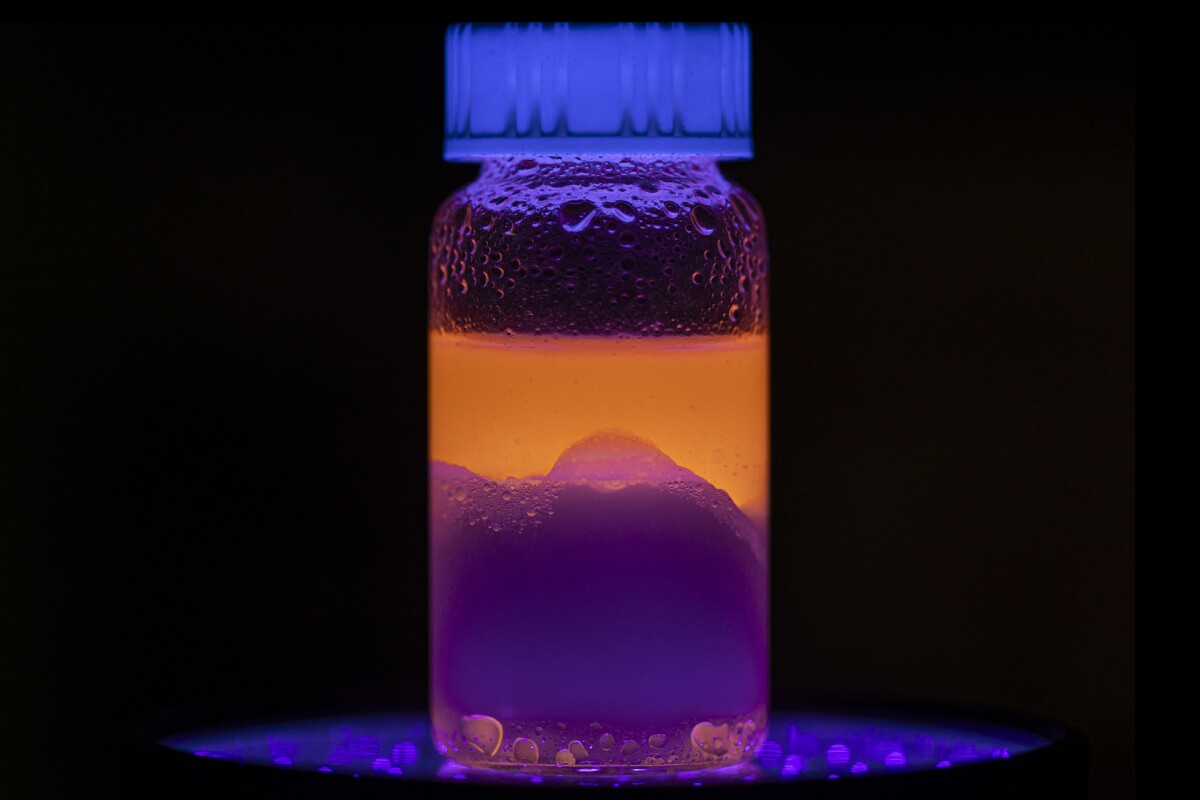
This is promising and should end up cleaning up municipal water supplies.
Likely it is add, agitate and then settle and skim. So at least we can clean up our main water supply and others will likely see Britta adapt their system making it used everywhere.
The problem is real, but this is a real solution. It does not end the BIG problem as that means changing out plastics. Then nature will finish the job.
Simple technique removes over 98% of nanoplastic particles from water
By Joe Salas
August 26, 2024
A new technique can remove nanoplastics from water – and under pretty lights, it sure looks cool
Sam O’Keefe via University of Missouri
https://newatlas.com/science/float-nanoplastics-microplastics-water/
Microplastics. We've found them in the Arctic sea and even frozen into the ice. The Mariana Trench, the deepest part of all our oceans, is polluted with plastic debris. Mount Everest has microplastic contamination. Our drinking water and food, especially processed foods in single-use packaging, are contaminated with microplastics. Recent studies have found microplastics in our blood, lungs, liver, and kidneys ... They've even been found in the placentas of unborn babies.
Studies on the adverse health effects of microplastics in the human body have only recently been done. Respiratory, gastrointestinal, endocrine, developmental and reproductive issues, and even cancers are starting to be linked to the consumption and inhalation of microplastics. Micro and nanoplastics are inescapable. But now researchers from the University of Missouri have developed a relatively simple and safe method of extracting over 98% of nanoplastic particles from water.
Gary Baker inspects a new solution to remove nanoplastics from contaminated water
Sam O’Keefe via University of Missouri
Using non-toxic, hydrophobic natural ingredients, researchers were able to create a liquid solvent that floats atop water like oil. When emulsified into the water and then allowed to reseparate, the solvent will then float back to the surface carrying more than 98% of the nanoplastic contaminants back to the surface with it, where it can simply be skimmed off the water. Given its hydrophobic nature, there's little risk of leaving further contamination from the eutectic solvent behind.
"Our strategy uses a small amount of designer solvent to absorb plastic particles from a large volume of water," says Gary Baker, an associate professor in Mizzou’s Department of Chemistry. "Currently, the capacity of these solvents is not well understood. In future work, we aim to determine the maximum capacity of the solvent. Additionally, we will explore methods to recycle the solvents, enabling their reuse multiple times if necessary."
Decanoic Acid and Tetraalkylammonium Bromide ([N4444]Br). This diagram shows how the solution mixes with water before floating back to the top carrying up all the nanoplastics with it
Sam O’Keefe via University of Missouri
We currently have some ways of removing microplastics from our drinking water, depending on the size. Basic activated carbon filters – like you'd find in a Britta – aren't specifically made to remove them, but are fairly effective at removing anything larger than five microns in size. Multi-stage sediment filters with a one-micron pore size are quite good. Reverse osmosis, which squeezes water through pores as small as one ten thousandth of a micron is one of the very best methods for removing contaminants of any sort from water – however, these become clogged and need to be cleaned regularly. Distilling water is nearly 100% effective, but also strips away any healthy minerals that our bodies need.

No comments:
Post a Comment